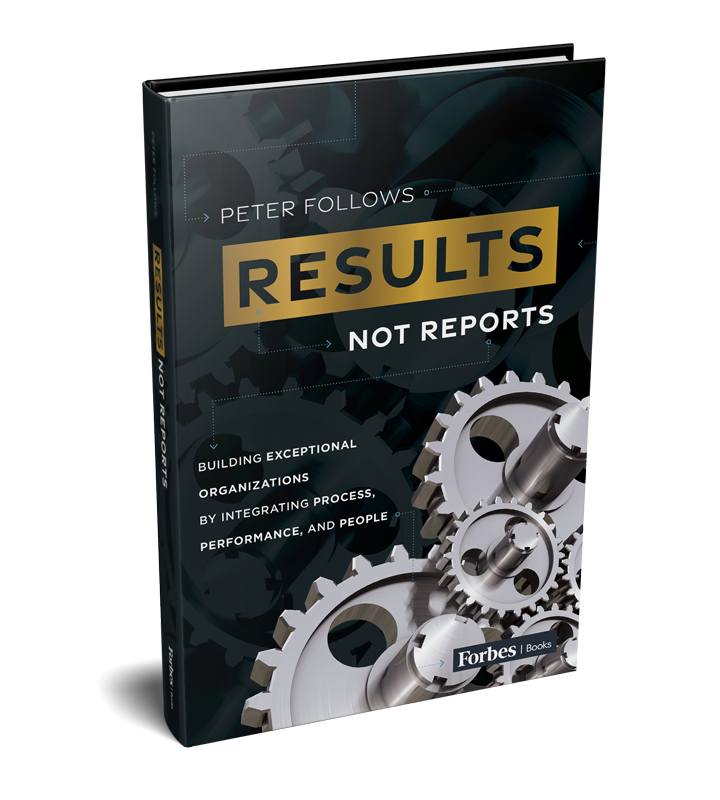Historically, business leaders have not had to prioritize electricity when auditing or improving their supply chain management. Often buried under umbrella categories such as utilities, maintenance, cost control and green initiatives, electricity has long been an assumed commodity. But, as the North American electrical grid faces rapidly increasing challenges, and the rate of outages continues to rise, the supply of electricity may no longer be as simple as flipping a switch.
There is an urgent need for businesses to adopt a proactive approach to managing their supply of electricity as part of an overall supply chain strategy. This is particularly true for organizations experiencing rapid growth.
Navigating Grid Challenges
The demands on the North American grid are escalating dramatically, driven partly by the electric vehicle (EV) market and the growing energy needs of data centers. (1) Suppliers are struggling to keep up, and many experts are predicting significant electricity shortages over the next five years.
The challenges of sudden growth are not helped by a decades-old infrastructure that is in desperate need of repair, expansion and modernization. Renewable energy sources are expanding rapidly, but harnessing the power they provide is not as straightforward as it is sometimes made out to be.
Thousands of solar, wind and battery projects are queued to connect to the U.S. electric grid, but they may never get the opportunity, in part due to the grid’s lack of capacity to handle new power sources. This is exacerbated by the long and arduous process of obtaining permits for new transmission lines, a process that can take up to 15 years. (2)
Complicating things further, the fluctuations and intermittent nature of these renewable sources requires a resilient, intelligent and flexible grid capable of ensuring a consistent energy supply. (3) (4)
Artificial intelligence (AI) is both a part of the problem and a part of the solution. Researchers estimate that, at current growth rates, some new AI servers could soon consume a small nation’s worth of electricity annually, putting tremendous pressure on a faltering electrical grid. At the same time, AI is being used in some areas to make the grid more adaptable and efficient, and large tech companies are even using AI to streamline the process of getting off-grid, on-site nuclear plants approved. (5)
Extreme weather conditions and aging power lines continue to be the most common causes of blackouts. Incidences of prolonged blackouts are estimated to be twice what they were just 10 years ago. Solutions are being developed, but their implementation is not keeping pace with demand, and the road ahead is likely to involve incremental improvements rather than a single, comprehensive fix.(6)
Optimizing Electricity Management
Applying the elements of an effective supply chain optimization plan to electricity requires leaders and managers to tailor each component of the plan to the unique challenges and opportunities present in energy management. Like all business challenges, energy management needs to be considered from three integrated perspectives: process, performance and people.
Process definition
Leaders need to carefully map out where energy demand comes from within their supply chains. Informed decision-making about energy management requires the comprehensive data collection on energy consumption patterns to better understand the drivers of peak demand, and costs from various points in the supply chain.
Implementing energy plans for consistent and reliable production may also mean ensuring key parts and component suppliers are taking similar measures to ensure reliability.
Collaboration with energy suppliers is another crucial component of energy management. As with other essential suppliers, businesses need to build strong relationships with utility companies and renewable energy providers to secure reliable and sustainable energy sources. Diversifying energy sources by procuring multiple or alternate suppliers, including renewables where available, can mitigate the risk of supply disruptions.
Performance management
To optimize performance, business leaders must define clear objectives and goals, establishing key performance indicators (KPIs) for energy cost management, reliability of supply, and carbon footprint reduction. Measurable targets should include specific goals for energy efficiency, renewable energy adoption, and system resilience.
Utilizing predictive analytics can help forecast energy needs and optimize consumption based on usage patterns and demand forecasts.
Integrated technology solutions, such as smart grid technology and energy management systems, can enable real-time monitoring and management of energy distribution and consumption. Automated controls for lighting, heating, cooling, and production equipment can optimize energy usage, while devices designed to provide real-time tracking and control of energy consumption across facilities can further optimize usage and reporting.
Risk assessments to identify potential disruptions in energy supply, such as grid failures or fuel shortages, and plans to ensure continuous operations during these disruptions, including backup generators and alternative energy sources, should be incorporated into risk management strategies.
But understanding what will happen to business operations in times of electricity interruption or rationing is only the first step in emergency preparedness. It is important to also inspect readiness for such an event through frequent audits and scenario planning.
People considerations
Managing energy differently requires understanding the impact changes have on people. Modifying processes and performance systems inevitably requires different behaviors from both management and employees. For example, trying to minimize peak demand may require changes to historical operating practices or perhaps shift structures. As well, incentives need to be reviewed to minimize conflicts and to promote cross-functional collaboration.
Enhancing Energy Resilience
Continuous improvement requires regular energy audits to identify areas for improvement and establish feedback mechanisms for continuous enhancement of energy management practices. Effective logistics and transportation management might include balancing the use of electric vehicles (EVs) in the logistics fleet or using advanced routing software to minimize energy consumption in transportation.
In energy-intensive industries, such as manufacturing, mining, and transportation, businesses might also incorporate the development of microgrids (localized grids that can operate independently from the main grid) into their electricity reliance strategy. Microgrids allow businesses to manage their energy use more effectively, ensuring uninterrupted power supply during main grid outages, and integrating renewable energy sources more seamlessly. (6) By adopting microgrids, businesses can enhance their energy resilience, reduce costs, and contribute to sustainability goals.
Businesses must pay close attention to the cost, availability, and reliability of their power supplies, and some should begin sourcing alternatives. By adapting components of supply chain management to focus on balancing the demand and supply of energy, businesses can achieve greater energy efficiency, reduce costs, and improve overall energy resilience and sustainability.
References:
AI’s Energy Appetite: Challenges for Our Future Electricity Supply (govtech.com)(1)
Queued Up: Characteristics of Power Plants Seeking Transmission Interconnection (Energy Markets and Policy.gov) (2)
America’s Power Grid Is Increasingly Unreliable (WSJ.com)(4)
The outdated power grid is nearing a crisis point. Here’s how to prevent it (msn.com) (4)
Amid explosive demand, America is running out of power (Washington Post) (5)
7 major challenges of a power grid and their solutions (Fuergy) (6)
5 strategies for energy market cost and risk reduction (Supply Chain Management Review)(7)

EXCERPT
Introduction to Chapter 2: Assess the Opportunity
I had a sales meeting with an executive for a company headquartered in London, England. We met in the lobby, and he ushered me into his office. He asked me to grab a seat while he got some coffee for the two of us.
He had a beautiful office with a stunning view of Trafalgar Square. The office had modern furnishings, which were a stark contrast to the mahogany paneling in the lobby and the historic building itself. The desk was a simple glass table with a chair on either side.
It was one of the few sunny days on my trip, and brilliant light streamed through the window. I sat down and took the opportunity to absorb the magnificent view of the busy square. The executive returned with the coffee.
As a casual conversation starter, I said, “I’ve been in many interesting offices, but this may be the best view I’ve ever seen.”
The executive placed the coffee down on the table and replied, “Thanks. Now get out of my chair.”
Like the part in a movie where the plot twist is revealed, all the missed clues suddenly became painfully apparent (particularly the placement of a notepad and family photograph). I had made the simple assumption that the executive would have his back to the window. Precisely because of the view, this executive had chosen to face the window.
A fairly heavy awkwardness followed as I collected my things and moved to the other side of the desk.
It’s hard not to make assumptions.
There are all sorts of common biases we all suffer from. Confirmation, framing, anchoring, pattern recognition, and self-interest are some of the more common ones. They all tend to lead us to embrace evidence that supports our thinking and to reject evidence that doesn’t.
As you become more familiar with any subject matter, you’re more likely to cut corners or to jump to conclusions without considering all the facts.
When we’re brought in by organizations to assess where they could improve, senior executives almost always have a good sense of what they want to achieve. They bring us in, in part, to get away from their own biases. What they want from us is a fresh perspective to identify where that improvement should come from and what’s required to get it.
We have our own biases, of course, but being an outside entity helps because it means we’re forced to gather facts to form our opinions, and we aren’t weighed down by politics or organizational memory.
To provide executives with this perspective, we perform an opportunity assessment. It’s a kind of operational due diligence to determine whether there are opportunities where we can help, above and beyond what they’re already doing.
The basic concept is to assess the performance of the operating environment and to link historical outcomes to the organization’s financial results. The assessment provides a snapshot of the operational health of an organization and an analysis of where they could improve.
The purpose of the assessment is to quantify the magnitude of opportunity and to determine what portion of it could be recovered. The purpose is not to identify solutions. Solutions are developed later with the input of operating managers and employees. The assessment provides a project approach and identifies the base period so that performance changes can be measured.
Reprinted with permission. Results Not Reports: Building Exceptional Organizations by Integrating Process, Performance, and People by Peter Follows (ForbesBooks; September 2023).
Peter Follows is the CEO and co-founder of Carpedia, a global management consulting firm, and the author of Results Not Reports. Carpedia, which helps organizations achieve lasting improvements in performance and profitability, has worked with over 1,000 clients across a wide range of industries, including well-known organizations such as The Ritz-Carlton Hotel Company, H.J. Heinz, Hilton, Delta Airlines, DHL and Yale New Haven Health. As CEO, Follows provides Carpedia’s overall strategic direction and is actively involved in product/service development and market-focused initiatives. He has extensive experience in strategy, supply chain management, and operational effectiveness. Learn more at Follows’ website.





